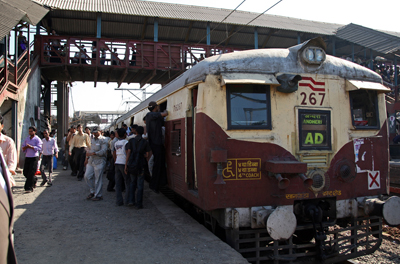India and China Exchange Strategies to Expand Railway Networks

Summary
Indian Railways (IR) is Asia’s second largest rail system, moving some 30 million passengers and 2.8 million tons of freight daily.1 Railways are critical to both economic growth and reducing environmental impacts; and Indian officials recognized the need for a long-term strategy to expand and modernize India’s railways to meet the needs of its burgeoning economy. China had already made significant improvements to its railroad system, and at India’s request, the World Bank’s South-South Facility funded a knowledge exchange for Indian government officials and railway technical experts to visit their peers in China.
This exchange helped Indian officials gather the kind of knowledge that could inform a long-term strategic plan for Indian Railways. The Indian delegation was highly impressed by the speed with which Chinese Railways had modernized; and they learned about the project design, quality control, and management techniques that China had used.
Rahul Kumar Goel, Executive Director with Indian Railways, stressed two lessons from China’s experience applicable to India: "Develop a long-term and credible plan, and convince others that you will stick to it,” said Mr. Goel. The second lesson, he said, is that engineering designs for high-speed railway projects must be “very high quality so that project implementation is carried out without any technical changes."
The Indians also learned about innovative funding approaches the Chinese had used. "Despite these projects being capital intensive, the Chinese railways were able to mobilize the funding from various sources other than the central government," said Mr. Jagmohan Gupta, the Director of Budget at Indian Railways.
Beneficiaries / Participants
Combined, India Railways and China Railways---the two largest in the world after the ones in the United States and Russia---employ nearly 4 million people, operate tens of thousands of kilometers of railways, and move millions of people each day.2 Nonetheless, governments in both countries are aggressively promoting expansion and modernization because railways play a critical role in economic growth with reduced environmental impact.
Indian Railways management needed more information to develop a vision and long-term strategy and wanted to learn about project planning and implementation techniques. India approached the World Bank to facilitate an exchange with China, which had modernized and expanded its railway system impressively and quickly.
The World Bank organized a knowledge exchange, supported by the South-South Experience Exchange Trust Fund, for officials, economists, engineers, and financiers with the Indian Ministry of Railways to meet with officials and technical staff from China Railways and China’s Ministry of Railways. In addition to holding several videoconferences, the two groups met for a week in China to help the Indian delegation develop a vision and create long-term technology and financial strategies to guide investments in the Indian rail sector.
Moving forward
This World Bank-brokered knowledge exchange was strategically chosen to strengthen the Indian railway network serving one of the world’s fastest growing economies. The exchange, it was hoped, would strengthen ties for further cooperation and modernization of both railways. This visit focused on India studying Chinese practices, but future exchanges will also bring China Railways representatives to India.

 China
China Colombia
Colombia Denmark
Denmark India
India Indonesia
Indonesia Mexico
Mexico Russian Federation
Russian Federation Spain
Spain United Kingdom
United Kingdom